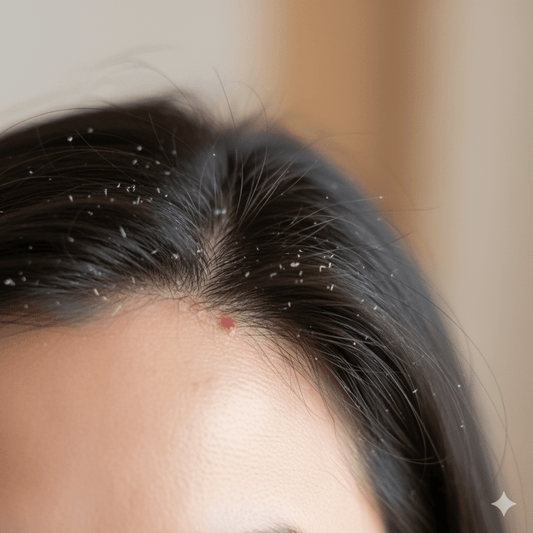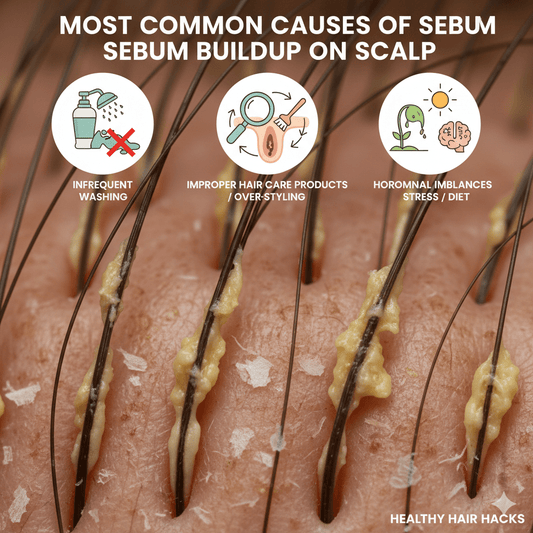Dandruff is one of the most common scalp conditions, affecting millions of people worldwide. While it’s not dangerous, it can be persistent, frustrating, and sometimes socially distressing. As a physician, I can tell you that much of what we believe about dandruff is oversimplified — and in some cases, the way we try to “fix” it actually makes it worse.
In this article, we’ll explore what can trigger flare-ups, the underlying causes from a medical perspective, and common mistakes that keep dandruff coming back.
What Makes Dandruff Worse
1. Infrequent Hair Washing
Skipping washes allows excess oil (sebum) to accumulate. Malassezia feeds on these oils, producing inflammatory byproducts that irritate the scalp and increase flaking. Even if you have dry hair, washing too infrequently can worsen dandruff.
Physician tip: For most people with dandruff, washing the scalp at least 2–3 times per week with an anti-dandruff shampoo is essential.
![]()
2. Harsh Hair Products
Products with high alcohol content, heavy fragrances, or irritating preservatives can disrupt the scalp’s skin barrier. Once the barrier is compromised, inflammation worsens and flakes become more pronounced.
Physician tip: Opt for gentle, pH-balanced formulas designed for sensitive scalps. Avoid overuse of dry shampoos, which can trap oils and yeast close to the skin.
3. Excessive Heat and Sweat
Warm, humid environments encourage Malassezia growth. Wearing hats for long periods, intense workouts without promptly washing hair, or using very hot water during showers can create the perfect conditions for a flare.
4. Stress
Cortisol, the body’s main stress hormone, can alter immune function and skin barrier integrity. Clinical studies have shown that stress often precedes or worsens seborrheic dermatitis flare-ups.
5. Cold, Dry Weather
Low humidity dries out the skin, leading to microscopic cracks in the scalp barrier. This not only triggers inflammation but also allows irritants to penetrate more easily.
What You Should NOT Do
1. Do Not Scratch Your Scalp
Scratching damages the skin, increases inflammation, and can lead to secondary bacterial infections. The temporary relief isn’t worth the setback in healing.
2. Do Not Overwash with Harsh Shampoos
While washing is important, scrubbing daily with strong detergents can strip too much oil, prompting the scalp to produce more sebum in response — a rebound effect that fuels dandruff.
3. Do Not Rely on Home Remedies Without Evidence
Apple cider vinegar, lemon juice, and baking soda are popular “natural” treatments online, but they can be highly irritating and alter scalp pH in ways that make dandruff worse.
4. Do Not Stop Treatment Too Soon
Anti-dandruff shampoos (containing zinc pyrithione, ketoconazole, selenium sulfide, or salicylic acid) often take several weeks of consistent use to show maximum benefit. Stopping early can cause symptoms to return quickly.
5. Do Not Assume It’s “Just Dandruff”
If your scalp is itchy, red, or shedding large patches, or if flakes appear on the face, eyebrows, or ears, see a physician. Conditions like psoriasis, eczema, and fungal infections can mimic dandruff and require different treatments.
The Takeaway
Managing dandruff isn’t just about using the right shampoo — it’s about creating a scalp environment that Malassezia can’t exploit. Avoid common mistakes, be consistent with treatment, and protect your scalp barrier. With the right approach, most people can significantly reduce symptoms and extend the time between flare-ups.







